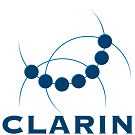Linguisitic topics: Difference between revisions
No edit summary |
No edit summary |
||
| (33 intermediate revisions by 3 users not shown) | |||
| Line 1: | Line 1: | ||
* | [[Categorie:Verwijderen]] | ||
* [[ | |||
* | ==Phonology, Morphology and Syntax: Taalportaal== | ||
* | Many aspects of Dutch linguistics are described in the [https://www.taalportaal.org/ Taalportaal website] | ||
* | |||
* Language | Taalportaal (or Language Portal) is an interactive knowledge base about Dutch, Frisian and Afrikaans. It provides access to a comprehensive and authoritative scientific grammar for these three languages. | ||
* | Up to now there has been no comprehensive scientifically-based description of the grammars of Dutch, Frisian and Afrikaans. This is a serious shortcoming, considering that | ||
* | * language is seen as an important part of cultural identity and cultural heritage | ||
* a large number of people learn these languages as a second language | |||
* educated speakers frequently lack grammatical knowledge of their native language | |||
* | * Dutch and Afrikaans an important object of study in linguistic theory and related fields of research | ||
Taalportaal fills this gap by providing a thorough description of the '''phonology, morphology and syntax''' of the three languages. | |||
==[[Lexicography]]== | |||
* Dutch [[dictionaries]] | |||
* the [[Elexis]] project | |||
==Morphosyntax== | |||
*[https://mimore.meertens.knaw.nl/ MIMORE]: Microcomparative Morphosyntax Research Tool | |||
*[https://mand.meertens.knaw.nl/database/ MAND/FAND/GTRP-database] | |||
==Syntactic Atlas of the Dutch dialects (SAND)== | |||
The Dynamic Syntactic Atlas of the Dutch dialects (DynaSAND) is an on-line tool for dialect syntax research. DynaSAND consists of a database, a search engine, a cartographic component and a bibliography. | |||
*[http://hdl.handle.net/11858/00-395C-0000-0000-6EB4-4 Online search] | |||
==Terminology== | |||
The Centre of Expertise for Dutch Terminology (Expertisecentrum Nederlandstalige Terminologie or ENT) supports people and organisations involved with terminology. They can find terminological information and tools here, on the website of the Dutch Language Institute (INT). A newsletter is sent round several times a year, describing developments and events in the field of terminology. | |||
*[https://ivdnt.org/terminologie/expertisecentrum/ Centre of Expertise for Dutch Terminology] | |||
===Higher Education Terminology=== | |||
HOTNeV is an acronym for Hoger Onderwijs Terminologie in Nederland en Vlaanderen (Higher Education Terminology in the Netherlands and Flanders). This project was prompted by a sharp increase in educational terms, generated by the EU’s education policy and implemented by the Tuning Project. HOTNeV has a dual purpose. Until now, Dutch equivalents for the English terminology were created mainly ad hoc, but this project focuses on the need to coordinate the provision of terms that have been approved by parties in the Dutch-speaking educational sector. It also wants to show the feasibility of this ambition. | |||
*[https://ivdnt.org/terminologie/onderwijsterminologie-hotnev/ HOTNEV website] | |||
===Medical Terminology=== | |||
The Medical Pilot is an experimental database in which a small part of the medical vocabulary is described at various levels, from scientific to accessible to people with low literacy, and in which differences between Flemish and Dutch terms are also shown. | |||
*[http://hdl.handle.net/10032/tm-a2-s7 MedPilot website] | |||
==[[Spelling and grammar]]== | |||
Latest revision as of 11:29, 5 September 2025
Phonology, Morphology and Syntax: Taalportaal
Many aspects of Dutch linguistics are described in the Taalportaal website
Taalportaal (or Language Portal) is an interactive knowledge base about Dutch, Frisian and Afrikaans. It provides access to a comprehensive and authoritative scientific grammar for these three languages. Up to now there has been no comprehensive scientifically-based description of the grammars of Dutch, Frisian and Afrikaans. This is a serious shortcoming, considering that
- language is seen as an important part of cultural identity and cultural heritage
- a large number of people learn these languages as a second language
- educated speakers frequently lack grammatical knowledge of their native language
- Dutch and Afrikaans an important object of study in linguistic theory and related fields of research
Taalportaal fills this gap by providing a thorough description of the phonology, morphology and syntax of the three languages.
Lexicography
- Dutch dictionaries
- the Elexis project
Morphosyntax
- MIMORE: Microcomparative Morphosyntax Research Tool
- MAND/FAND/GTRP-database
Syntactic Atlas of the Dutch dialects (SAND)
The Dynamic Syntactic Atlas of the Dutch dialects (DynaSAND) is an on-line tool for dialect syntax research. DynaSAND consists of a database, a search engine, a cartographic component and a bibliography.
Terminology
The Centre of Expertise for Dutch Terminology (Expertisecentrum Nederlandstalige Terminologie or ENT) supports people and organisations involved with terminology. They can find terminological information and tools here, on the website of the Dutch Language Institute (INT). A newsletter is sent round several times a year, describing developments and events in the field of terminology.
Higher Education Terminology
HOTNeV is an acronym for Hoger Onderwijs Terminologie in Nederland en Vlaanderen (Higher Education Terminology in the Netherlands and Flanders). This project was prompted by a sharp increase in educational terms, generated by the EU’s education policy and implemented by the Tuning Project. HOTNeV has a dual purpose. Until now, Dutch equivalents for the English terminology were created mainly ad hoc, but this project focuses on the need to coordinate the provision of terms that have been approved by parties in the Dutch-speaking educational sector. It also wants to show the feasibility of this ambition.
Medical Terminology
The Medical Pilot is an experimental database in which a small part of the medical vocabulary is described at various levels, from scientific to accessible to people with low literacy, and in which differences between Flemish and Dutch terms are also shown.
